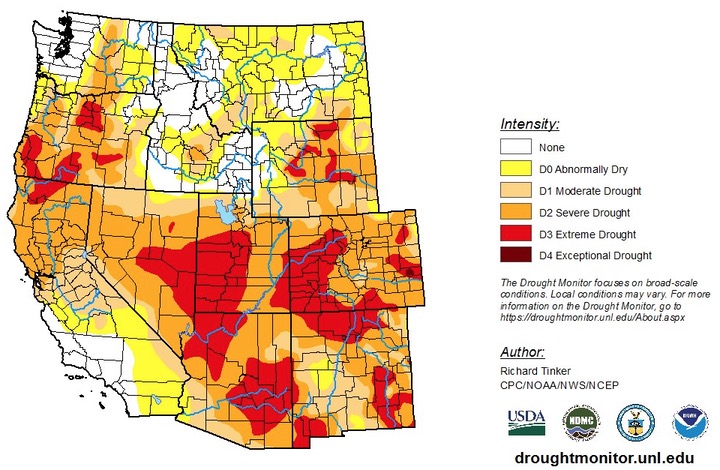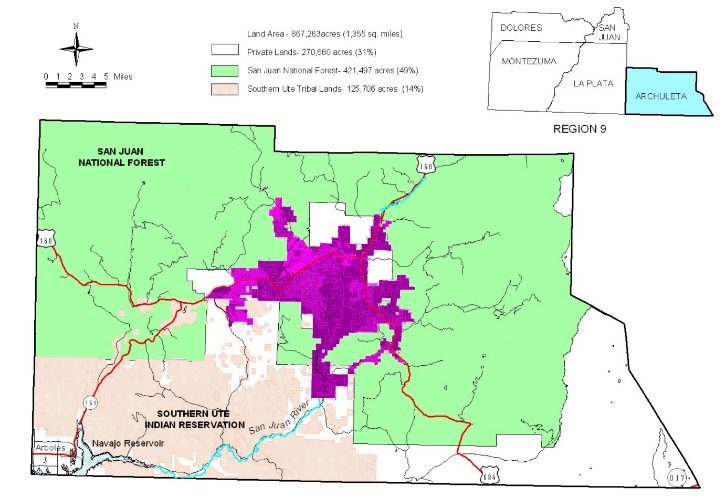Disclosure: I currently serve on the San Juan Water Conservancy District board of directors, but this editorial reflects my personal views and opinions, and not necessarily the views and opinions of the SJWCD board as a whole.
A man much wiser than me — former Speaker of the House Tip O’Neill — was known for the phrase, “All politics is local.” I assume he wanted to get across the idea that, even in a national election, voters make choices based on the issues they are experiencing in their own local communities.
I would propose a corollary concept:
“All water is local.”
The US government has been paying attention — some measure of attention, at least — to the 2020 “drought” in the western United States. In particular, unseasonably warm, dry weather is being cited by some as a key reason behind serious wildfires in Arizona, California, Colorado, Oregon, Washington and Wyoming. As of August 27, wildfires have scorched more than 1.2 million acres in California this summer, killing at least seven people and destroying nearly 2,000 homes and structures. Here in Colorado, we saw four major wildfires this summer, including the Pine Gulch Fire, which grew to become the largest wildfire in the state’s history at 139,007 acres.
Archuleta County has thus far made it through the summer without a major fire. Knock on wood. We haven’t, however, made it through the summer without ‘below average’ rainfall.
Here’s a map showing the drought conditions in the American West on September 1:
The bright red color indicates something called “Extreme Drought.” According to the folks at the University of Nebraska-Lincoln, Archuleta County and La Plata County are sharing “Extreme Drought” conditions this summer with the rest of Colorado’s Western Slope, and with northern New Mexico. In fact, the whole state of Colorado is looking pretty dry.
But for some reason, Colorado didn’t warrant a mention in the University’s written summary.
This is a relatively dry time of year in many areas, especially in California, but a weak monsoon season and periods of excessive heat have led to widespread severe to extreme drought in a large area covering northern and eastern New Mexico and most of Arizona, Utah, Nevada, northern California, Oregon, and central Washington…
But all water is local.
Our primary local water provider, the tax-supported Pagosa Area Water and Sanitation District, sent out their weekly report on Tuesday, September 1, which showed all of our water reservoirs — Stevens, Hatcher, Village, Pagosa and Forest — to be more than 88% full. Lake Pagosa was shown as 99% full.
Given that all water is local, we might assume that strategic planning for future water needs also ought to be “local”.
The San Juan Water Conservancy District — established by the District’s voters in 1987 — has posted an invitation to review, and comment on, its draft “Strategic Plan”. You can click here to download the draft Plan and certain related documents. Your comments on the Plan should be emailed to SJWCD Secretary John Porco at jporco.sjwcd@gmail.com by this coming Monday, September 7. The SJWCD board will consider your comments as they finalize the District’s plan.
The magenta color indicates the boundaries of the District, within Archuleta County..
The District includes most of the populated areas in Archuleta County, and its boundaries are similar to — but not identical to — Pagosa Area Water and Sanitation District, the primary provider of treated drinking water in Archuleta County.
SJWCD is supported by a property tax mill levy, but does not currently own or maintain any water treatment, storage or delivery infrastructure. The District’s main mission, since 1987, has been to help identify and plan future water storage reservoirs. Water reservoirs are not cheap, and when they are located at some distance from where people are living, the infrastructure needed to deliver the water from the reservoir is also expensive to build, and maintain.
Looking at the problem historically, human beings have typically settled in places where water is readily available — except perhaps in situations where, say, a tribal group has been exiled from their homeland and forced to live in an adjacent wasteland. But people have been known to voluntarily settle in barren wastelands for no real good reason. It happens.
Much of the American West has historically been just such a barren wasteland — especially when compared to the eastern half of the US — but certain select areas have long been blessed with rivers and lakes, and forests, and abundant wildlife. Pagosa Springs has been blessed that way.
For several decades now, the “pro-growth” elements in the Archuleta County community have been telling us that our town — and by extension, our wallets — will not be able to grow indefinitely unless we are willing to increase the number and size of our local reservoirs. I suppose that makes a certain kind of sense.
It makes a certain kind of sense, if you believe certain things.
If you believe that:
- A community that grows indefinitely is somehow “better” than a community that grows only in a sustainable manner.
- Unchecked growth benefits not only newcomers, but also the people who have lived here for decades.
- Growth is the best way to “improve” the local economy.
- Reservoirs, in general, are harmless to the overall water supply in the region… and a reservoir built over here, has no negative effects on the amount of water available over there.
- The most reasonable way to manage water supplies, in a region that suffers from regular drought conditions, is to build reservoirs… and not, instead, through conservation.
We’ll take a look at some assumptions.



